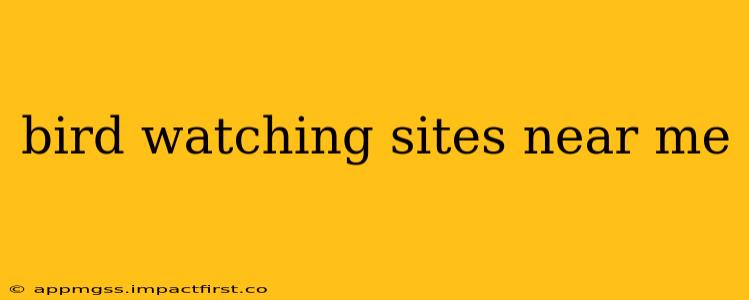Are you ready to embark on a thrilling birdwatching adventure? Discovering the perfect spot to observe these magnificent creatures can be the difference between a fleeting glimpse and a truly memorable experience. This guide will help you locate fantastic birdwatching sites near you, catering to all skill levels, from beginner birders to seasoned enthusiasts.
Finding Birdwatching Hotspots Near You
The first step in your avian quest is identifying potential locations. Several resources can help you pinpoint prime birdwatching sites in your vicinity:
-
Online Resources: Websites like eBird (maintained by the Cornell Lab of Ornithology) and Audubon allow you to search for nearby locations based on species sightings. These platforms often include user-submitted checklists and photos, offering valuable insights into what you might expect to see.
-
Local Audubon Societies: These organizations are invaluable resources for birdwatchers. They often organize guided bird walks, maintain lists of excellent viewing spots, and provide information on local bird populations.
-
State and National Parks: Parks frequently have designated trails and areas specifically designed for birdwatching. Their websites usually list bird species commonly seen within their boundaries and offer maps highlighting optimal viewing spots.
-
Nature Centers and Wildlife Refuges: These protected areas provide habitats for a diverse array of bird species, offering exceptional opportunities for observation. Many offer guided tours and educational programs.
-
Local Libraries and Visitor Centers: Don't underestimate the power of local resources! Libraries often have books and brochures detailing local birdlife and prime viewing areas. Visitor centers can also provide maps and information on nearby parks and nature reserves.
What to Consider When Choosing a Birdwatching Site
Once you've identified potential locations, consider these factors when making your selection:
-
Habitat Variety: Look for areas with diverse habitats, as this usually attracts a wider variety of bird species. Consider wetlands, forests, grasslands, and even urban parks – each provides unique opportunities for birdwatching.
-
Accessibility: Choose a location that is accessible to you, considering factors like terrain, distance, and parking availability.
-
Time of Year: Different bird species migrate at different times of the year, so your ideal location might change seasonally. Research the typical migration patterns of birds you're interested in seeing.
-
Level of Difficulty: Some trails are more challenging than others. Select a site appropriate for your physical capabilities and experience level.
-
Crowd Levels: If you prefer a peaceful, solitary experience, opt for less popular areas, especially during peak seasons.
What Equipment Do I Need for Birdwatching?
While you can certainly enjoy birdwatching with minimal equipment, having a few key items can significantly enhance your experience:
-
Binoculars: These are essential for getting a closer look at birds. Choose a pair with good magnification and clarity.
-
Field Guide: A field guide will help you identify the birds you see. Look for guides specific to your region.
-
Camera (Optional): Capturing photos of your avian encounters is a fun way to document your adventures.
-
Notebook and Pen (Optional): Keep a record of the birds you see, along with notes about their behavior and location.
-
Appropriate Clothing and Footwear: Dress comfortably and wear appropriate footwear for the terrain.
H2: What are the best times of day for birdwatching?
The best times for birdwatching are typically during dawn and dusk. Many bird species are most active during these periods, making them easier to spot. However, you can still see many birds throughout the day, depending on the species and their behavior.
H2: Are there any bird watching apps I can use?
Yes! Several excellent birdwatching apps are available, such as Merlin Bird ID, eBird, and Audubon. These apps use your location to suggest nearby birding hotspots, help you identify birds, and keep track of your sightings. They are invaluable tools for both beginners and experienced birdwatchers.
H2: How do I approach birds without disturbing them?
Approaching birds requires patience and respect. Avoid sudden movements or loud noises, and maintain a safe distance. Use natural cover to your advantage, and never try to touch or handle a bird. Remember, observing birds should always prioritize their well-being.
H2: Where can I find guided bird walks near me?
Many local Audubon societies, nature centers, and parks offer guided bird walks. Check their websites or contact them directly to inquire about upcoming events. These walks are a great way to learn about local birds and birdwatching techniques from experienced birders. Often, they also cater to different experience levels, so you can find a guided walk that suits your needs.
By following these tips and utilizing the available resources, you'll be well on your way to finding amazing birdwatching sites near you and enjoying the beauty of these fascinating creatures. Happy birding!
